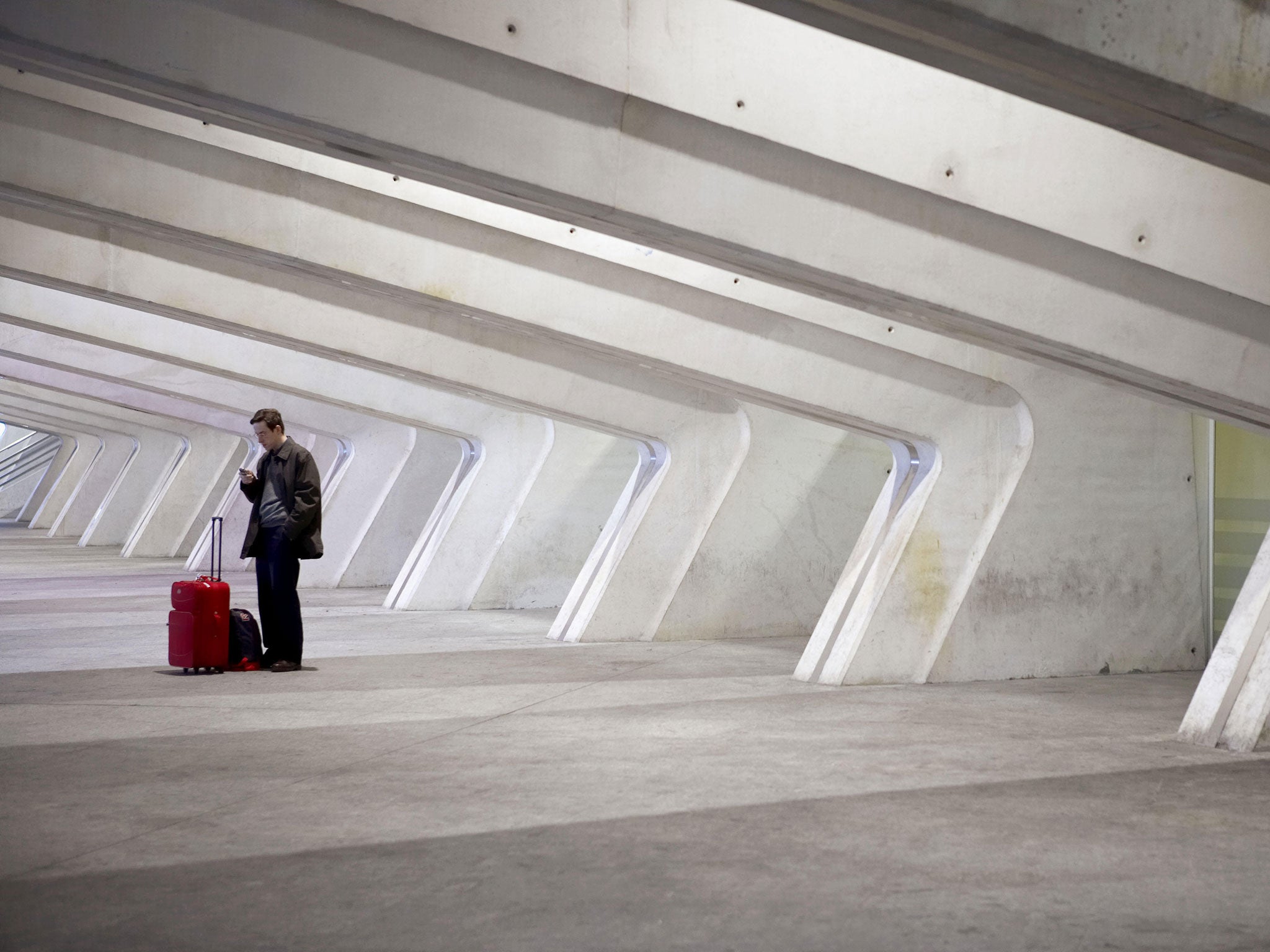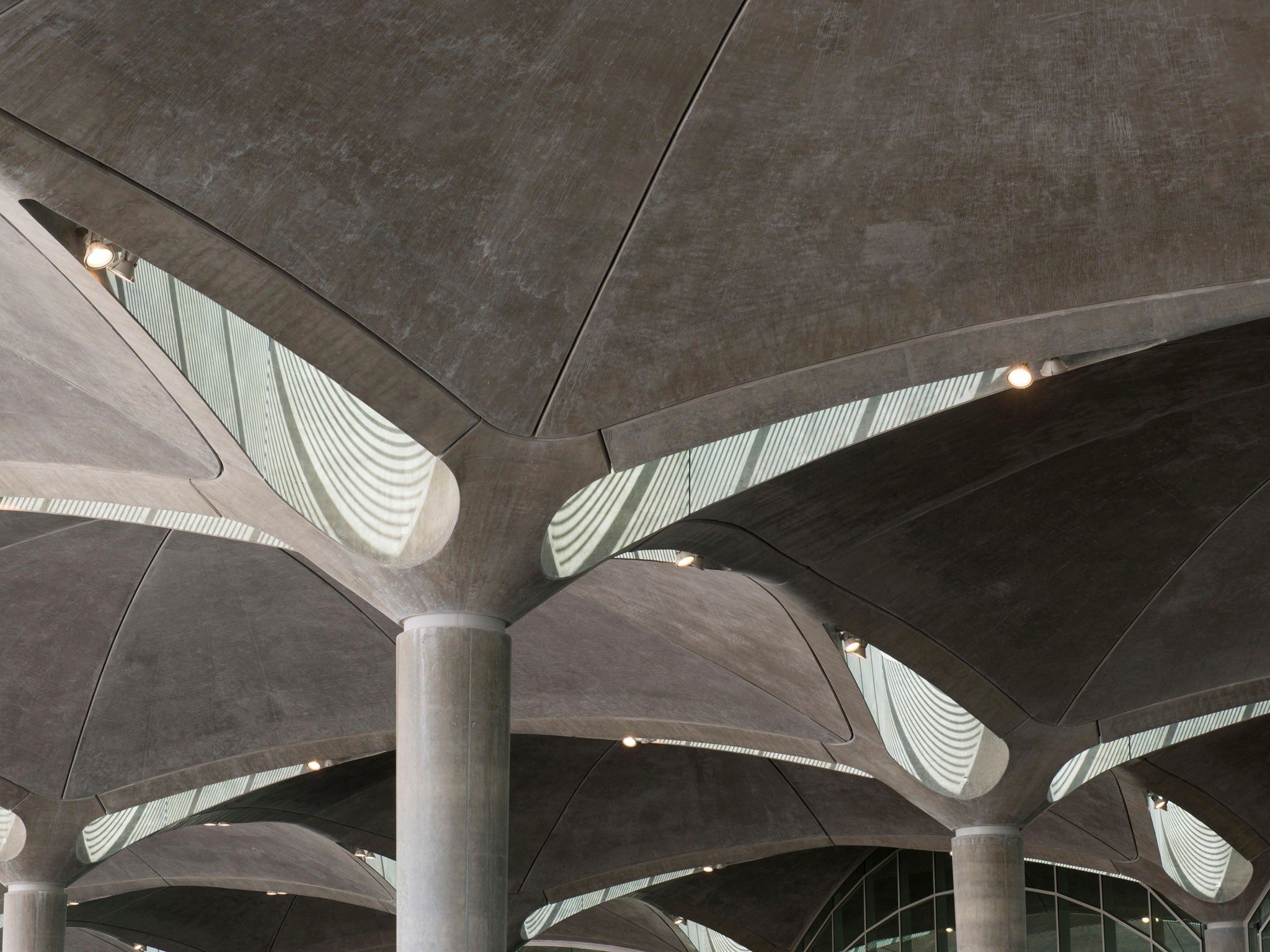Airports are 'gateways to nations' but can they also be beautiful?
Full of queues and stress, airports aren't always a flyaway success. But look closer - you might be surprised

Your support helps us to tell the story
From reproductive rights to climate change to Big Tech, The Independent is on the ground when the story is developing. Whether it's investigating the financials of Elon Musk's pro-Trump PAC or producing our latest documentary, 'The A Word', which shines a light on the American women fighting for reproductive rights, we know how important it is to parse out the facts from the messaging.
At such a critical moment in US history, we need reporters on the ground. Your donation allows us to keep sending journalists to speak to both sides of the story.
The Independent is trusted by Americans across the entire political spectrum. And unlike many other quality news outlets, we choose not to lock Americans out of our reporting and analysis with paywalls. We believe quality journalism should be available to everyone, paid for by those who can afford it.
Your support makes all the difference.The limitations of the human body means we require machines much larger than ourselves to propel us skyward; and with them an interface between our earthbound lives and the complex network of trails above our heads. Dating from the 1930s and replacing the earlier "aerodrome" and "airdrome", the word "airport" is a reminder of the time when such places were actual ports, run by the city to which they were attached. Today they get a bad rap. Endless queues, delays and terrorist-induced anxiety combine to convert the romance of flight into a grumble of complaint. Many of us feel we shouldn't be flying at all. Yet, despite our reservations, at some level airports remain magical spaces, outside our normal routine and beyond the normal reach of time, a limbo between here and there.
I am on my way to Terminal 2 at Heathrow, which accommodates 20 million of the 75 million passengers the airport processes every year. As the Tube trundles sedately through west London, I realise I'll be late for my appointment with a member of the airport staff who is to take me "airside". I don't feel the stress of missing a connecting flight, but it reminds me of barely caught planes, of lift-offs doused in adrenaline.
The truth is most of us arrive at airports in a mildly fretful state. Have we remembered passports, tickets, the right clothes, currency and credit cards, the chargers for our various electronic devices? Above all, will we arrive in time to check in? To add to our struggles we drag our possessions with us, lifting our bags out of cabs, off trains, up elevators and rolling them along endless walkways, embarrassed by the roaring sound suitcase wheels make on concrete, wondering again why no one has invented hovering luggage.
Airports are a signature building type of the past half-century and many of today's leading architects, from Norman Foster to Santiago Calatrava, have engaged with the conundrums they pose. Passengers should be inspired, yet also reassured; their journey through the structure as swift as possible but the economic potential of their "dwell time" within it realised effectively. An airport, an architect pointed out to me recently, "is a shopping mall with planes attached".
Increasingly they are also, as Luis Vidal, the architect of Terminal 2 puts it, "gateways to nations", attempting through vernacular detail and public art to brand the city with which they're associated. At the entrance to Terminal 2, Richard Wilson's monumental, 70-metre sculpture "Slipstream", a 3D representation of the flight path of a plane, signposts London as a creative hub. I jog past it to Costa, to meet my guide from Heathrow Airport Ltd. After working here for four years she knows the place well, but admits that as soon as she passes through it as a passenger she reverts to type. "When I travel with my boyfriend through Heathrow and he asks me the way, suddenly I don't know; I feel anxious", she explains.
Designing airports requires considerable research into passenger behaviour. "Architects understand that people feel different emotions at different places in the building. Everything is designed to help passengers orientate themselves." She points to the undulating steel-frame roof above our heads. "Can you see it's sloping down, towards the security gates?" The slope is quite subtle, I observe. Can it really have the effect of shepherding us in the right direction? "Yes. If you look at the floor you will see too that the tiles are darker where customers need to do things: over by the self-service check-in kiosks, for instance, they change to a darker grey. It's the same when they arrive at security." We walk over to have a look. At the gates, uniformed figures stand guard holding clear plastic bags, their feet firmly planted on dark grey tiles, next to a notice announcing "You are now entering a security zone".
Almost all of us feel some nervousness as we reach passport control. We have checked our luggage, so we are beginning to feel lighter, freer, but our identity, our very sense of self, is now concentrated into a single document. What if the stone-faced men and women who pass it under a scanner see something that stops them, and therefore us, in our tracks? Our passports, after all, grant membership to that club which allows movement across borders. You might say, in the current news climate, that entry to or exclusion from it defines our world.
We head off through an unmarked entrance to the staff security checkpoint. The absence of queues and crowds means I haven't taken the process sufficiently seriously. A bunch of keys in my pocket sets off the alarm and I have forgotten to remove a laptop from my backpack before putting it on the conveyor belt, resulting in a thorough shake-down. Retail staff working in the airport pass through these security checks every day. In the maze of corridors we encounter ghost-like figures dressed variously as chefs, security guards and perfume-counter assistants, before emerging into a light-filled concourse.

Behind us passengers are replacing shoes and tethering belts at the end of a security line. From our elevated vantage point my eyes are drawn to a large window, through which we can see aircraft lined up below us on the runways. Once again the architecture sends a subliminal message intended to create a sense of reassurance and arrival. The planes are there: the urgency that has propelled us forward slackens. Released from worldly cares, what can we do but wander and shop? The most popular retail purchases, I discover, are sunglasses – inhabitants of a cloud-smothered nation, on leaving we adjust our vision, ready for the technicolour reality that is "abroad".
Yet even here, amid the restaurants run by TV chefs, the simulacrum of Bond Street with its Smythson, Versace and Gucci, disaster lurks. Purple-clad Passenger Ambassadors speak 60 languages between them and can be summoned from anywhere in the airport to rush to passengers' aid. Shaazia, the guardian angel of Departures, regales us with tales that exemplify our deepest fears.
An elderly couple from India transferring at Heathrow have mislaid their passports somewhere in the terminal; another couple have picked up the wrong bag and are terrified they've lost all their possessions; an asylum seeker, travelling to be reunited with his wife after three years' separation, has no money for food for his children and can't read the departure screen. With cheerful efficiency, the Ambassadors untangle the twists of fate that threaten to engulf their charges.
If airports are theatres of human drama, today they are themselves on the world stage, subject to the audience of public opinion. Squabbled over by politicians, invaded by protesters, battling to expand at the very time climate science demands we wean ourselves off flight, they remain central to the culture, the place where the most pressing ideas about our futures selves play out.
'Station to Station' by James Attlee is available now, £14.99
Join our commenting forum
Join thought-provoking conversations, follow other Independent readers and see their replies
Comments